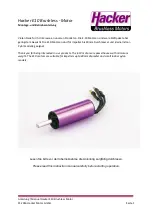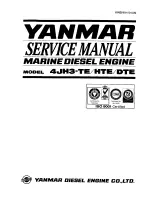
1
6HOHFWLQJPRWRUFDSDFLW\
Flow of motor selection
1. Definition of mechanism to be driven by motor.
Define details of individual mechanical components (ball screw length, lead and pulley diameters, etc.)
<Typical mechanism>
Ball screw mechanism Belt mechanism Rack & pinion, etc.
2. Definition of operating pattern.
Acceleration/deceleration time, Constant-velocity time, Stop time, Cycle time, Travel distance
Note) Selection of motor capacity significantly varies depending on the operating pattern.
The motor capacity can be reduced if the acceleration/deceleration time and stop time are set as long as
possible.
3. Calculation of load inertia and inertia ratio.
Calculate load inertia for each mechanical component. (Refer to "General inertia calculation method" described
later.)
Divide the calculated load inertia by the inertia of the selected motor to check the inertia ratio.
For calculation of the inertia ratio, note that the catalog value of the motor inertia is expressed as “× 10
–4
k
g
·m
2
”.
4. Calculation of motor velocity
Calculate the motor velocity from the moving distance, acceleration / deceleration time and constant-velocity time.
5. Calculation of torque
Calculate the required motor torque from the load inertia, acceleration/deceleration time and constant-velocity time.
6. Calculation of motor
Select a motor that meets the above 3 to 5 requirements.
Time
Velocity
Travel distance
(slashed area)
Stop time
Deceleration
time
Cycle time
Acceleration
time
Constant-
velocity time
Summary of Contents for MINAS-BL GP series
Page 1: ... ...
Page 2: ... ...
Page 3: ... KV series GV series Options Information GP series ...
Page 4: ... ...
Page 5: ...6 ...
Page 6: ... ...
Page 7: ... ...
Page 8: ...9 ...
Page 9: ... ...
Page 29: ... MEMO ...
Page 39: ... MEMO ...
Page 64: ...1 KV series GV series Options Information GP series MEMO ...
















































